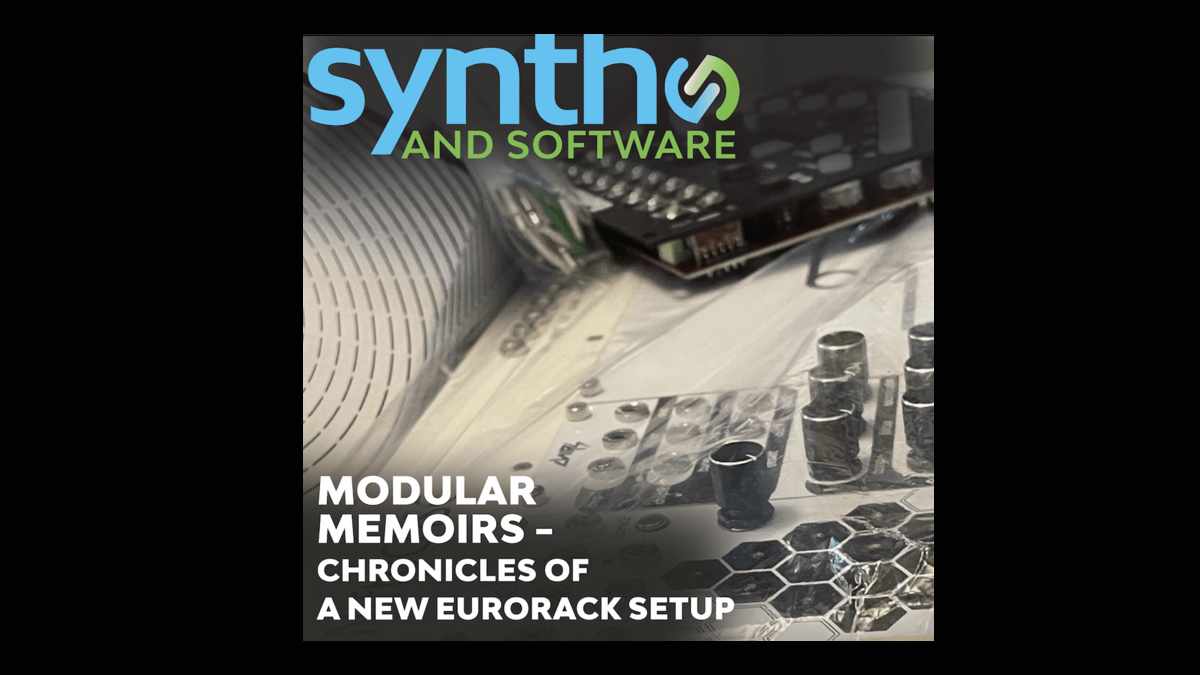Analog
Modular Memoirs Part 2: The Case for a Modular Case

The chronicles of a new Eurorack setup
The very first challenge when building a Eurorack modular set up is choosing a case. After all a Eurorack case is the granite foundation upon which our castle of electronic extravaganza will be built upon!
At its core a case serves two basic but vital functions in the Eurorack ecosystem — to provide an enclosure in which to mount the various modules, and to provide power for said modules.
The amount of space in a specific case is measured in HP units or “Horizontal Pitch,” which can be thought of as how many mounting screw-in holes the case has in each row (minus two, since there is no need to put screw holes all the way to the very edges of the rack space). 84HP and 104HP are the two most common sizes.
84HP is the same width as a standard 19″ audio rack. Some manufacturers sell side ears to mount your modules in a vertical rack, for those interested in a more traditional mounting option (each module’s vertical size is equivalent to 3U audio rack unit heights).
Lastly, some Euroracks are built in “Skiff” size. In plain English this means that the depth of the case is more shallow and only allows for modules that don’t extend too deeply into the case. If you opt for a Skiff case, make sure that any modules that you purchase will be “Skiff-friendly” or they won’t fit inside.
Power for Eurorack modules is a bit… complicated. Electricity is delivered as both a positive and a negative 12 volt DC current “rail” through a ribbon cable. In addition some modules might require an additional + 5 volts of power, which is also provided by the ribbon cable.
Important: some cases don’t come with a built-in power supply, so you have to provide your own. Make sure to read the fine print before you click Buy on that strangely too-good-to-be-true-priced case!
Lastly, while the power is delivered through a ribbon cable equipped with several multi-pin sockets and typically mounted at the bottom of the case, connecting each individual module to those sockets requires yet another ribbon cable that is typically not included with the case or the modules themselves. You might have to order it separately.

After much research I opted to go with the Cre8Audio NiftyCASE, an 84HP enclosure (also sold as part of the NiftyBUNDLE, which includes two modules to get you started).
The main thing that appealed to me about the NiftyCASE, aside from the clean design, was its inclusion of built-in MIDI input and a USB port. Since I will need to interface the Eurorack modules to my DAW, having a case that allows me to do that without needing to purchase additional hardware is a definite plus. With some of the Eurorack cases priced at well over $1,000, the attractive $200 cost of the NiftyCASE was also a good incentive.
The way the NiftyCASE USB/MIDI interface works is that incoming MIDI data is converted to CV (control voltage) and Gate signals, which can then be patched to the various modules through two sets of 1/8″ jacks (each set corresponds to a MIDI channel). MIDI Clock and Mod wheel CC are also converted through two additional output jacks.
I wish the audio output would also go through the USB port, but up to two modules’ outputs can be merged together into a single 1/4″ output on the back of the case, which can then be connected to an audio interface.
Power-wise, the ribbon strip at the bottom of the case has sockets for up to ten individual modules, although I suspect that most people would be hard pressed to fit much more than a handful of modules in the 84HP space.
With the most important component settled on, I can now focus on the installation of my modules into the NiftyCASE. That’s coming next chapter. Stay tuned!



















